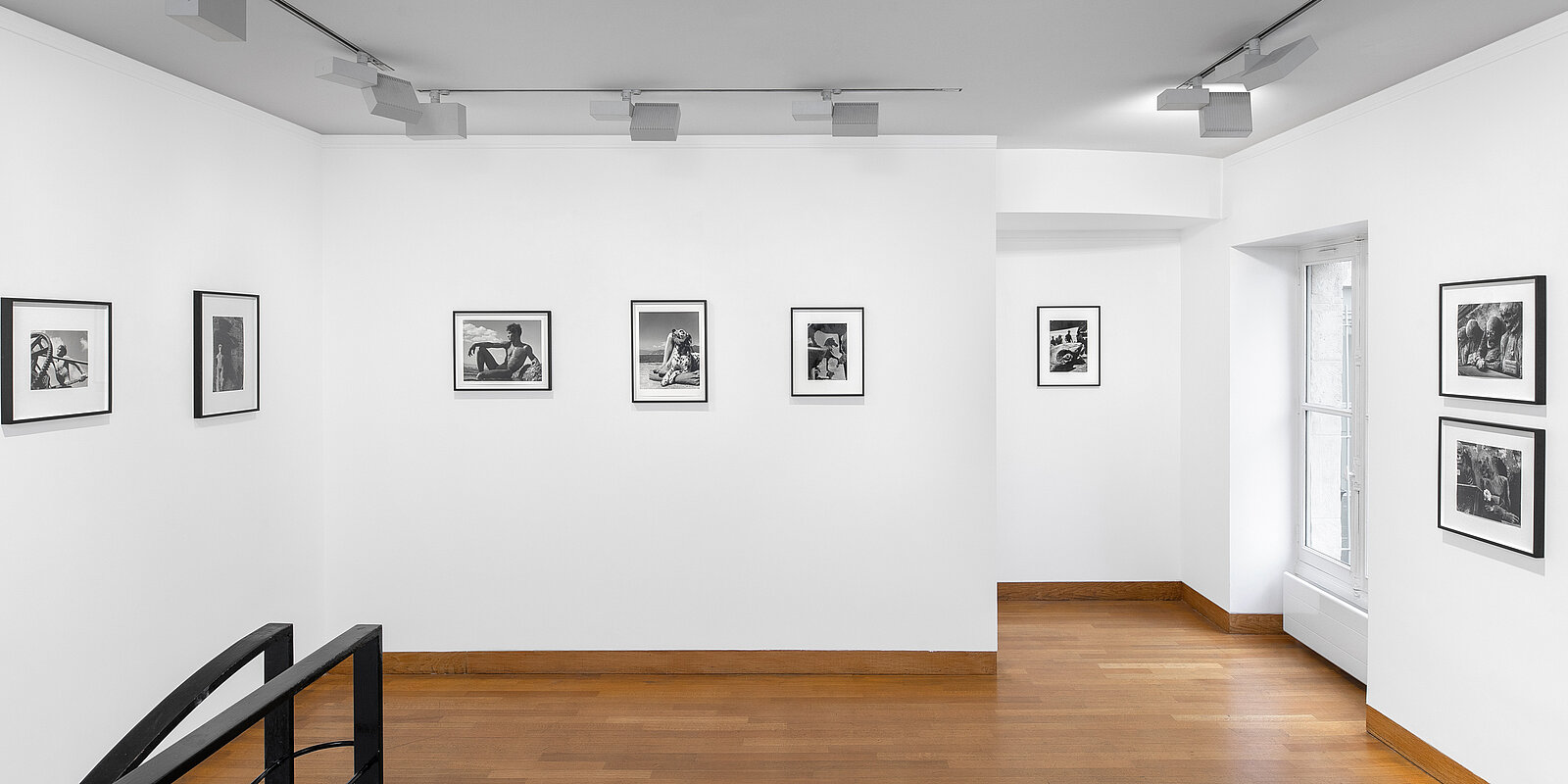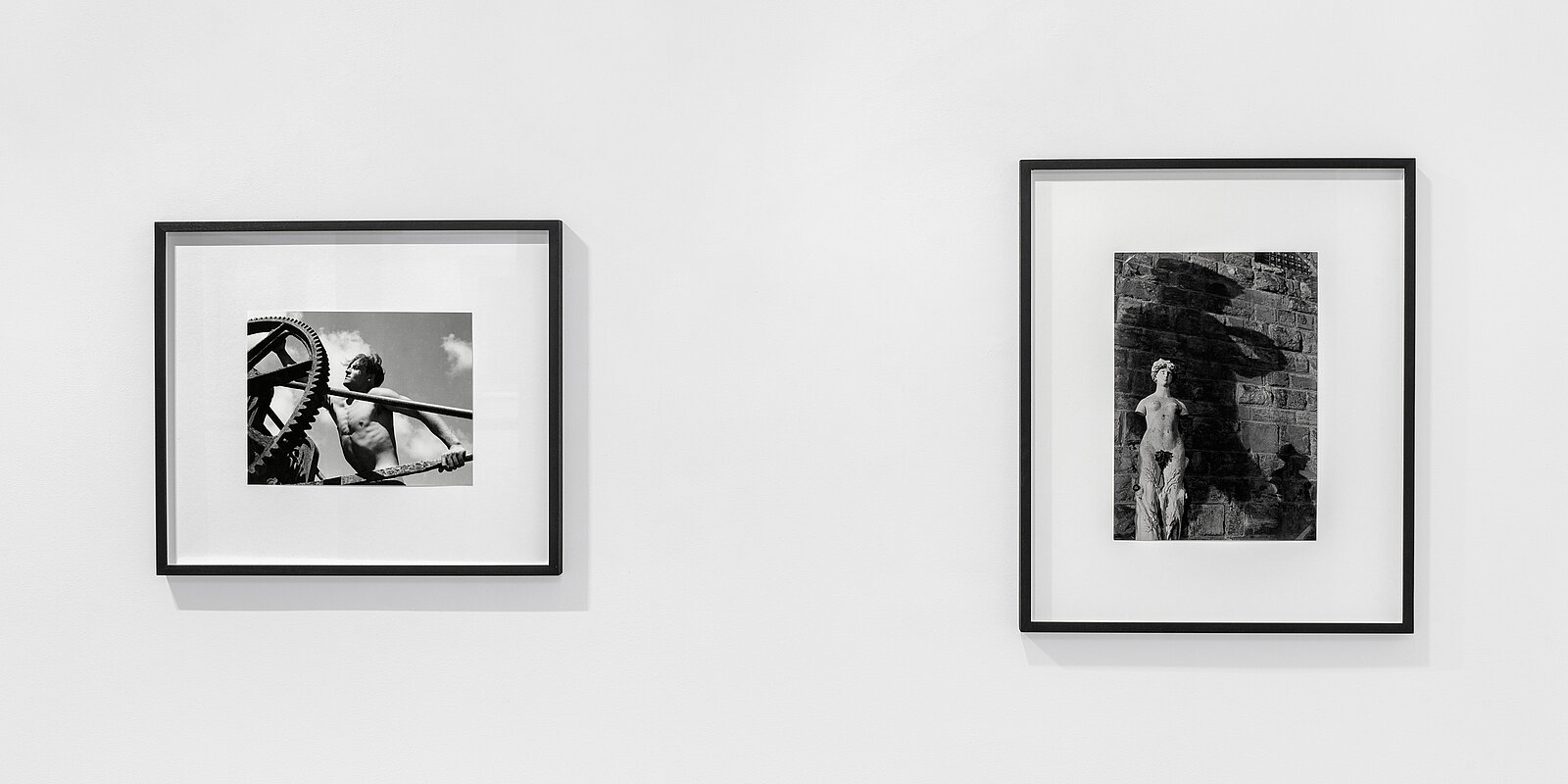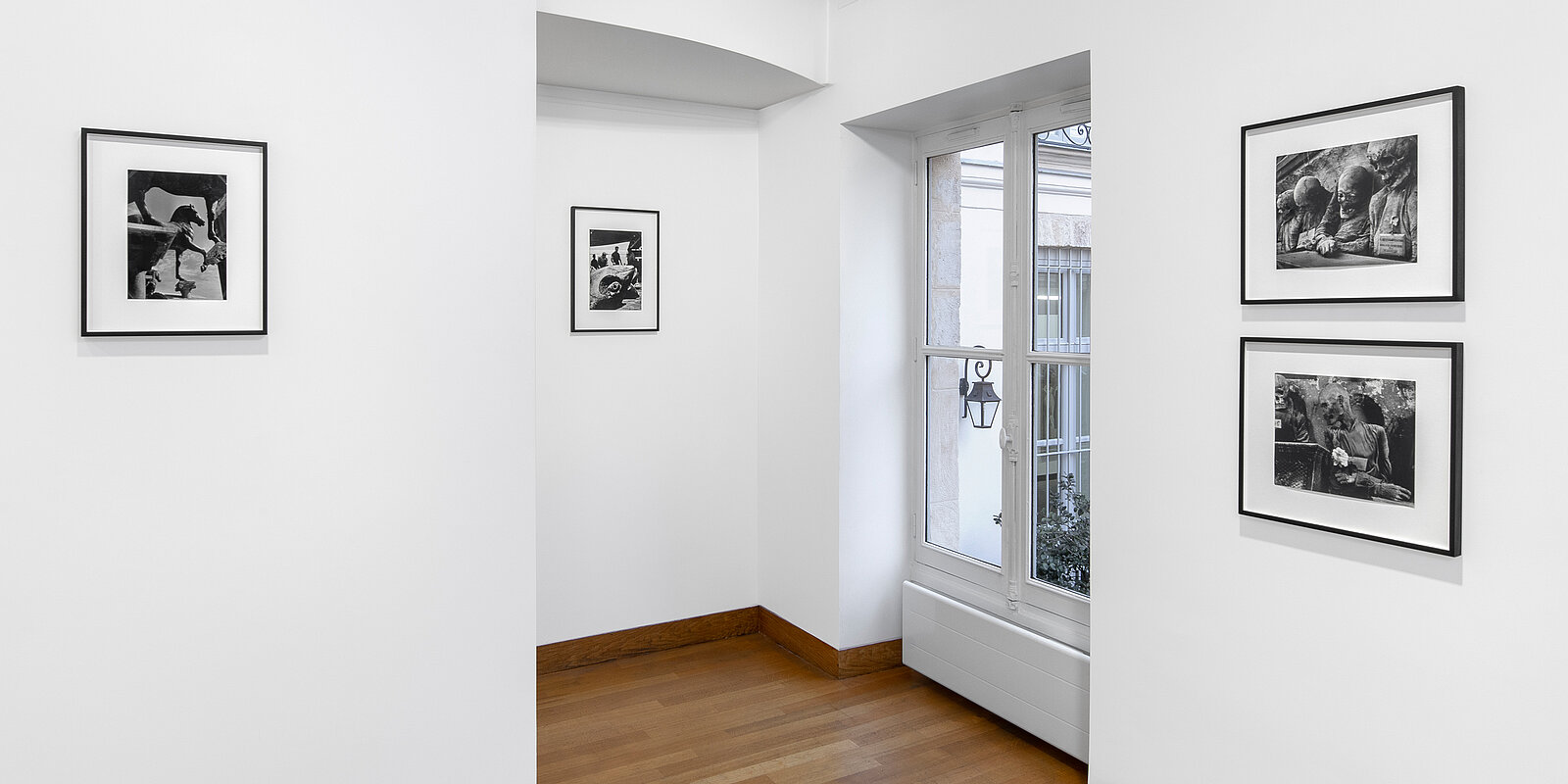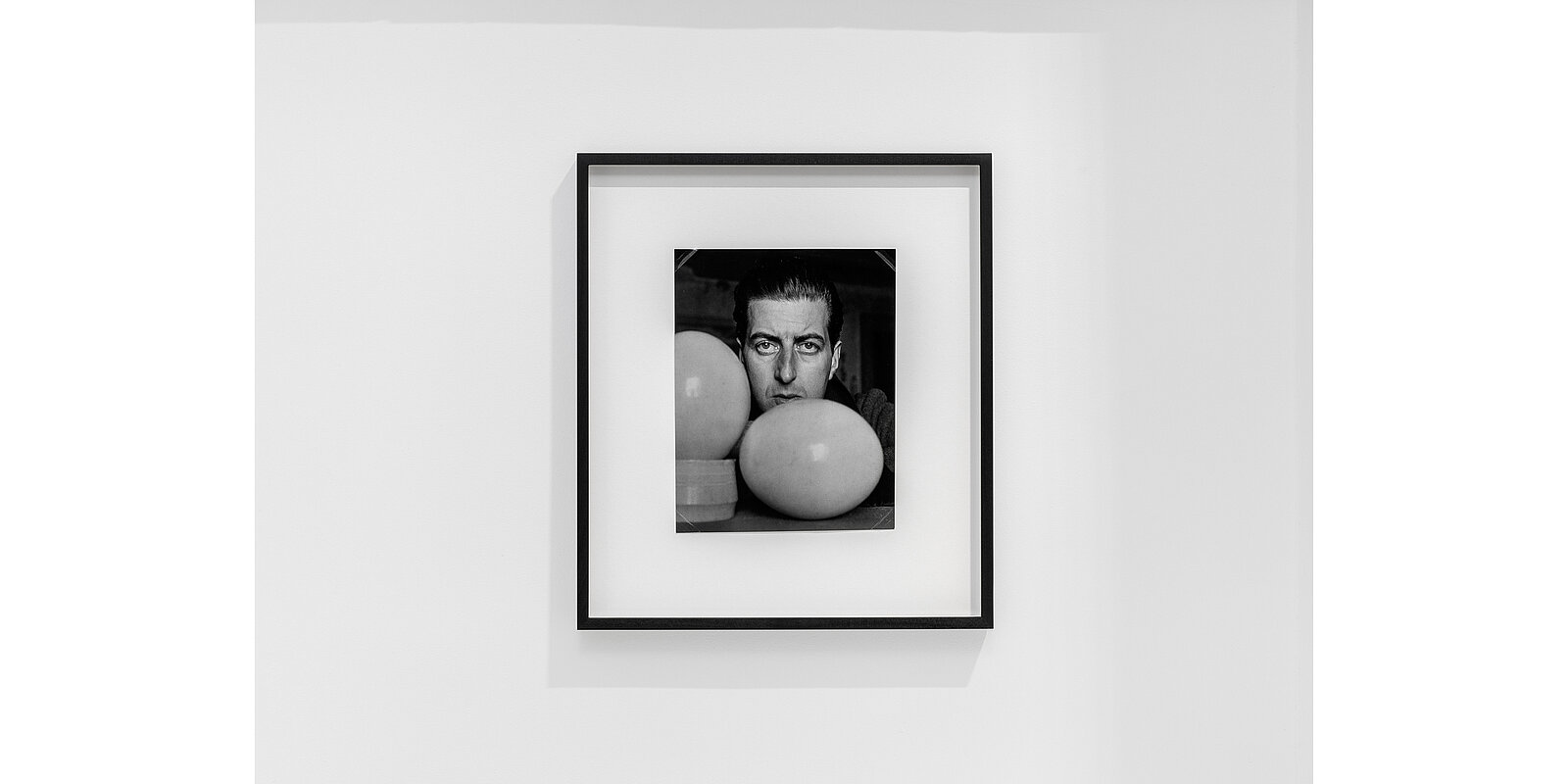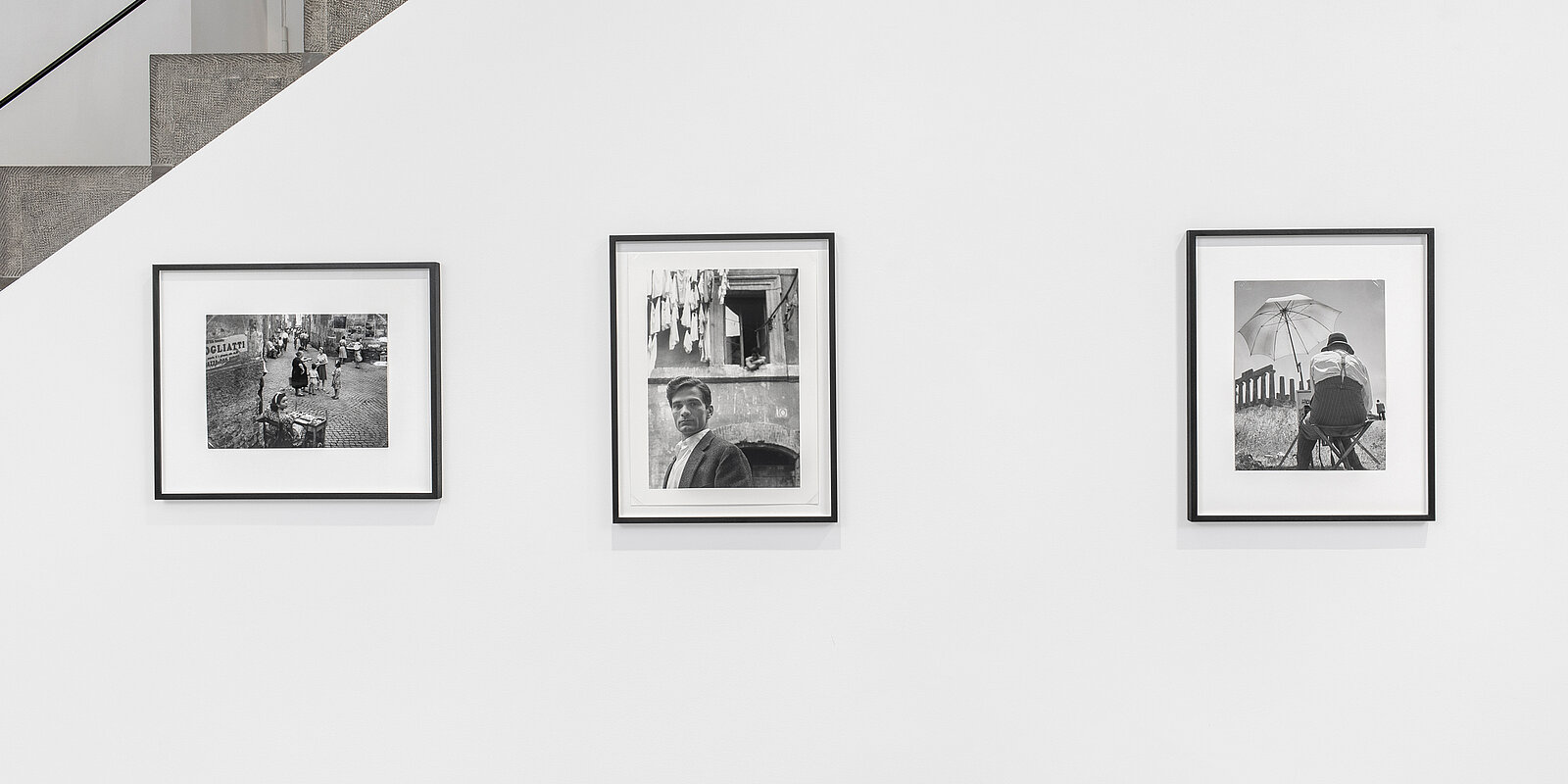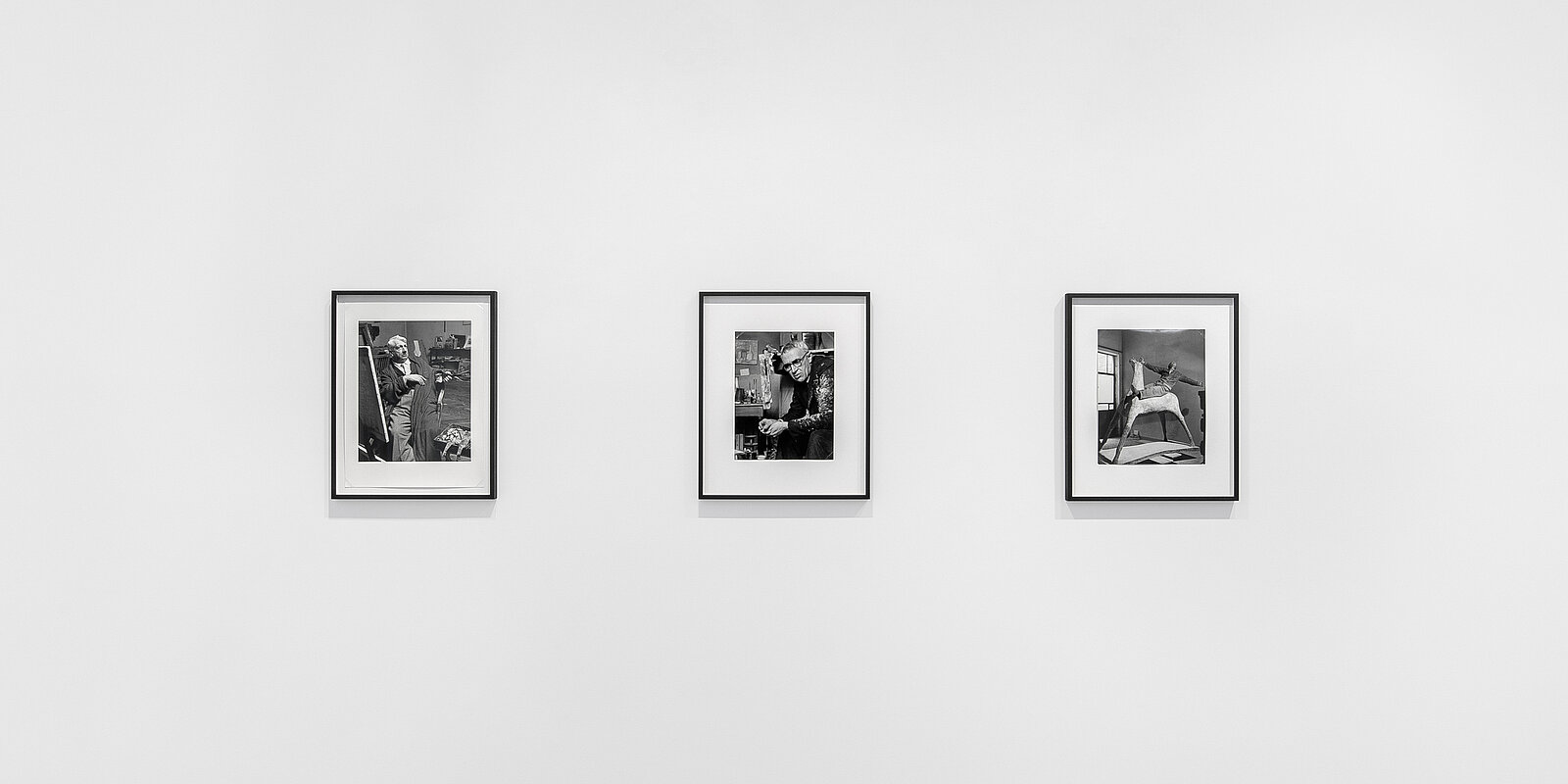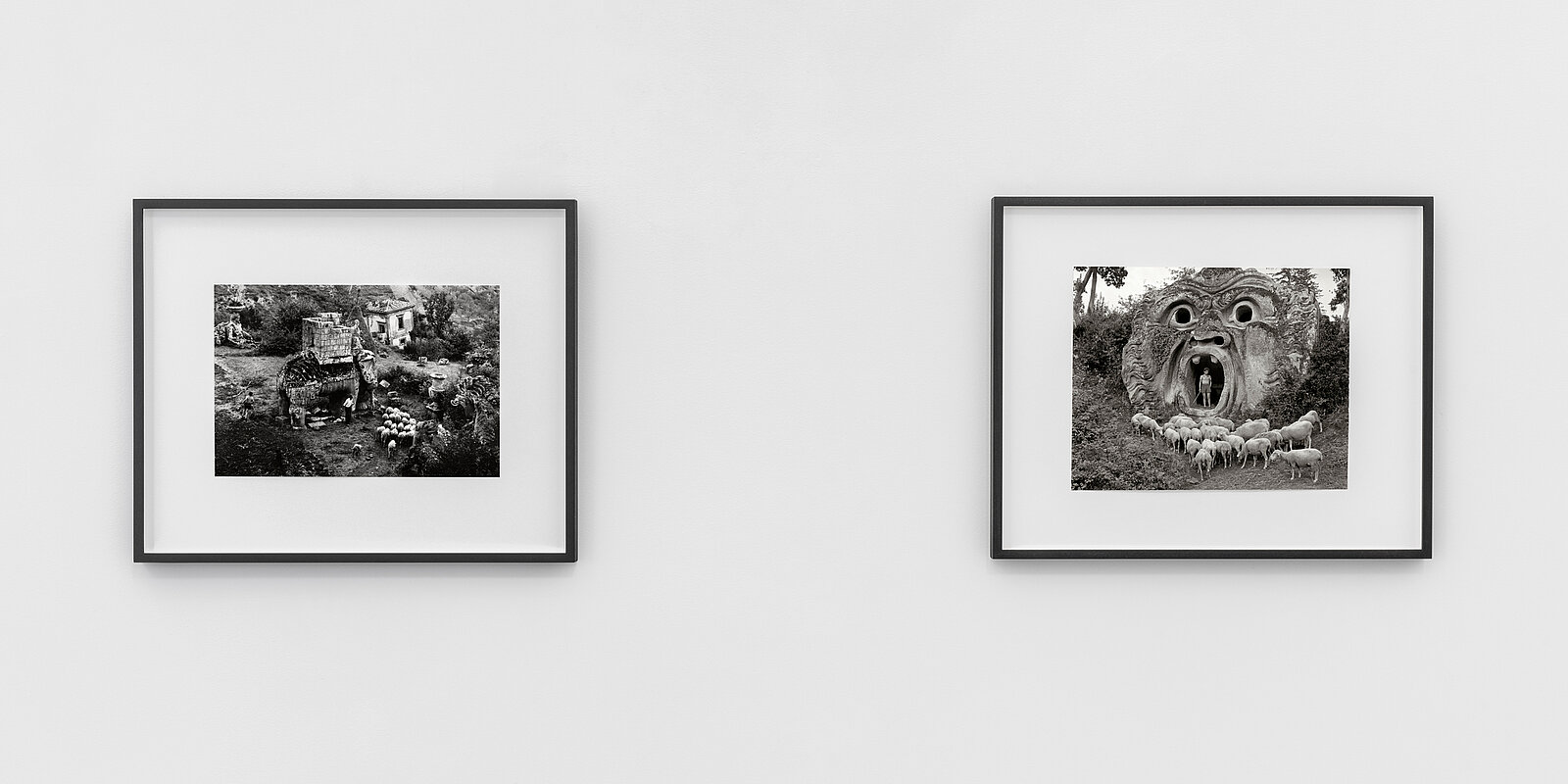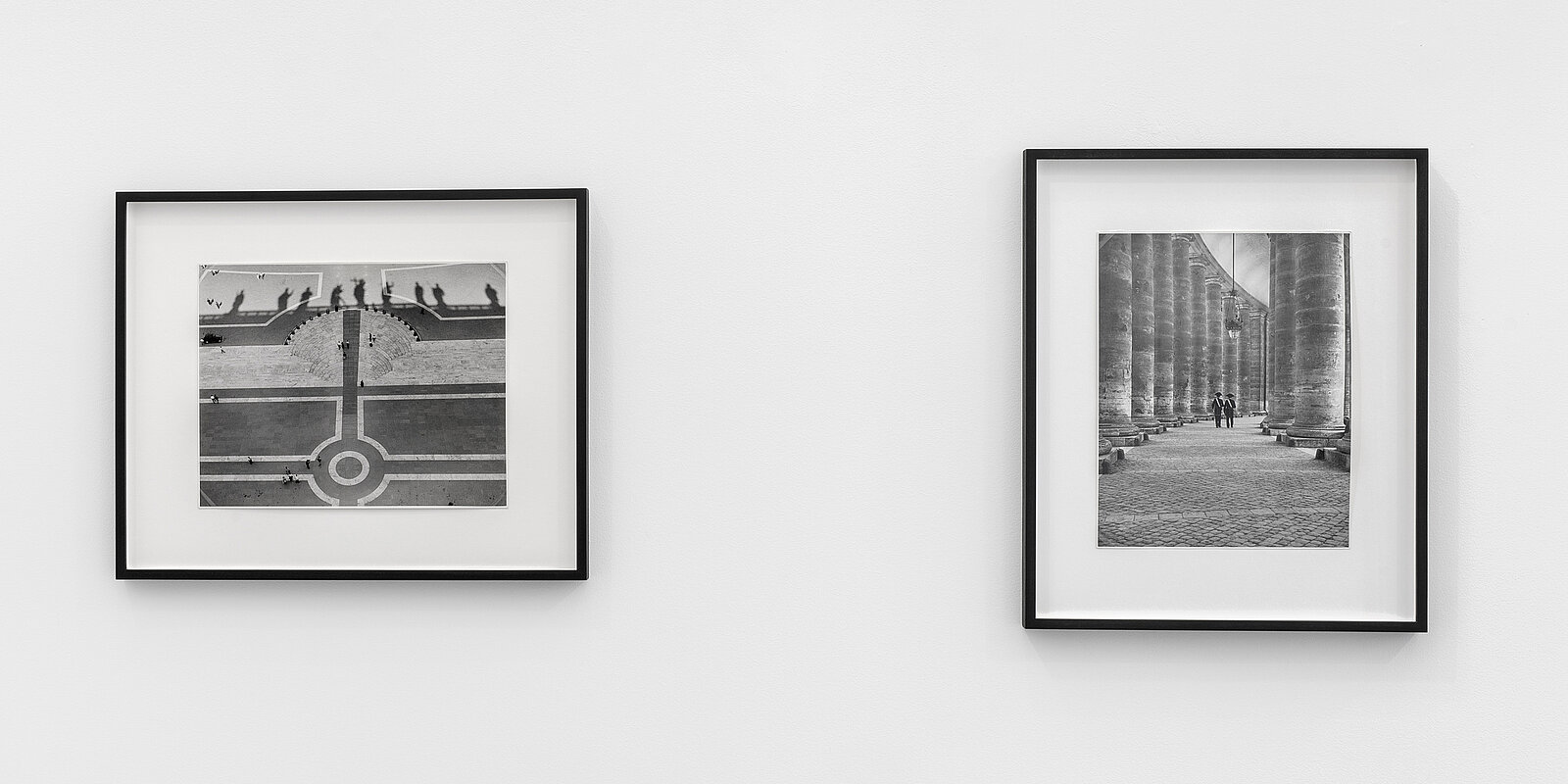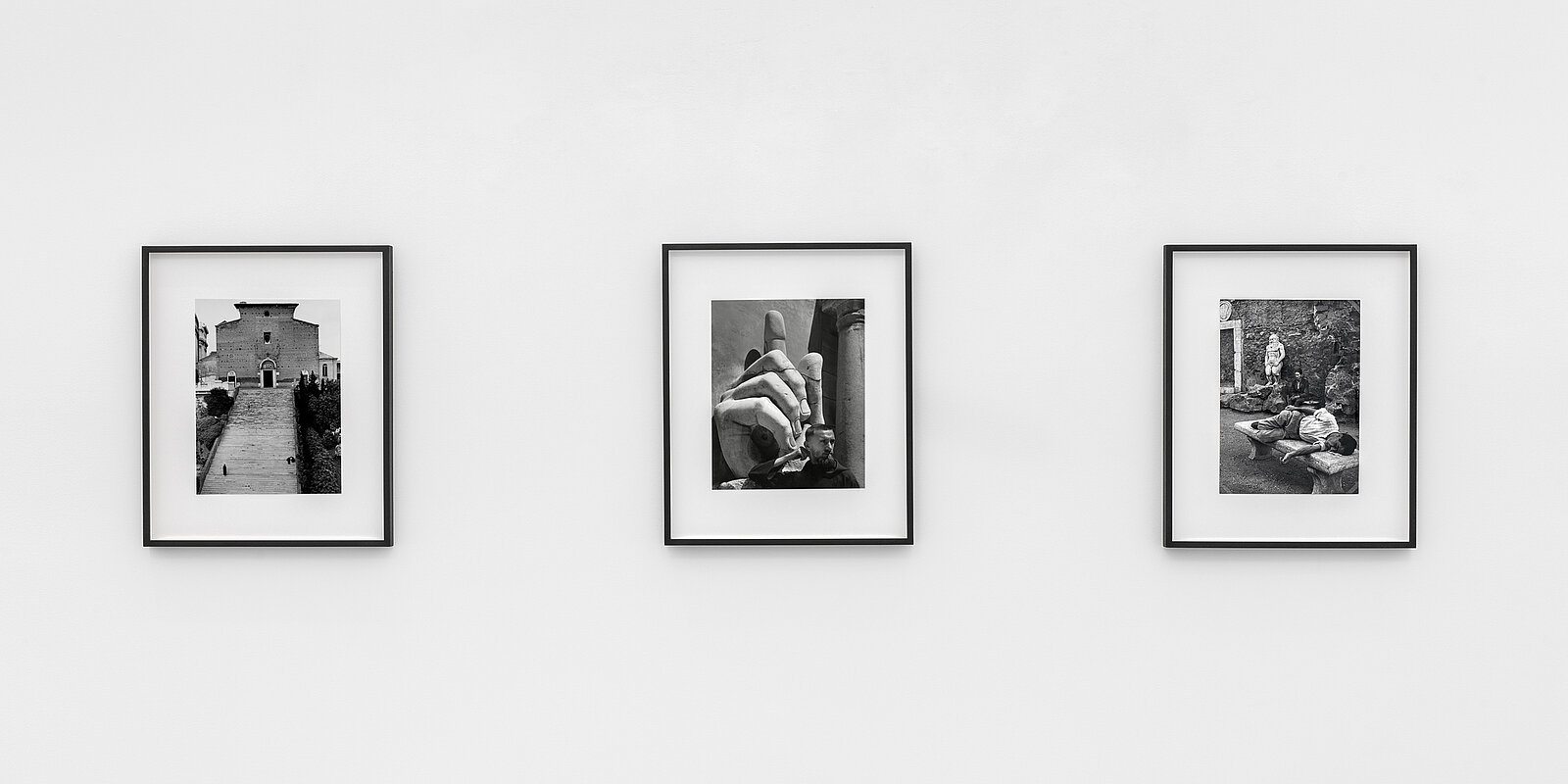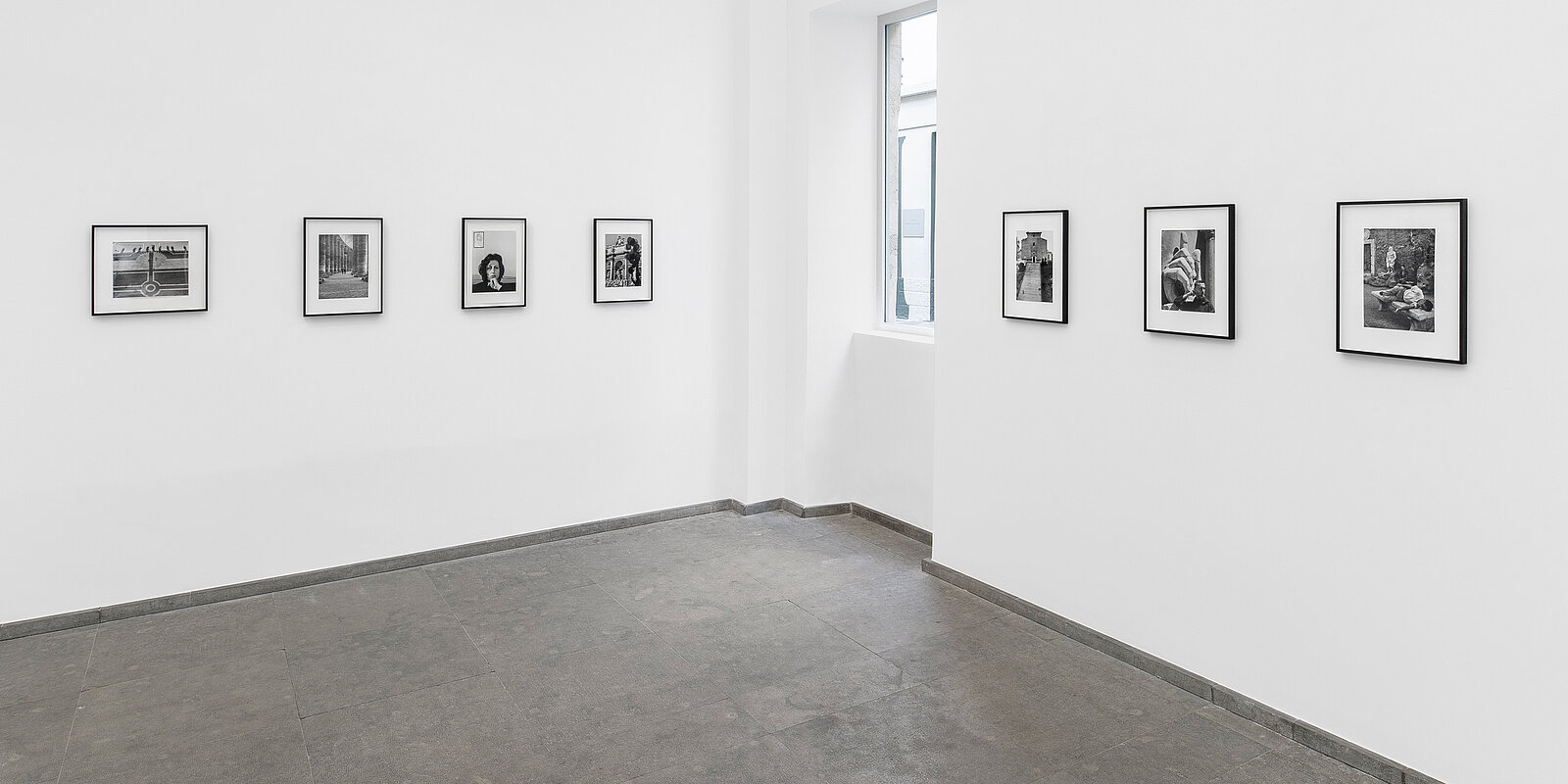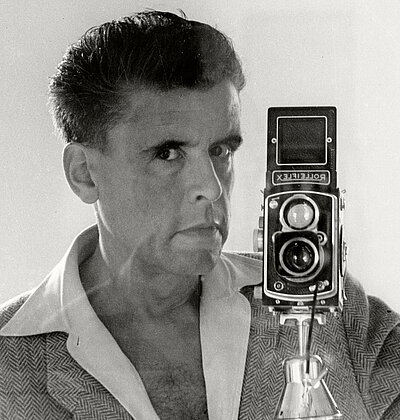Herbert List: ITALIA
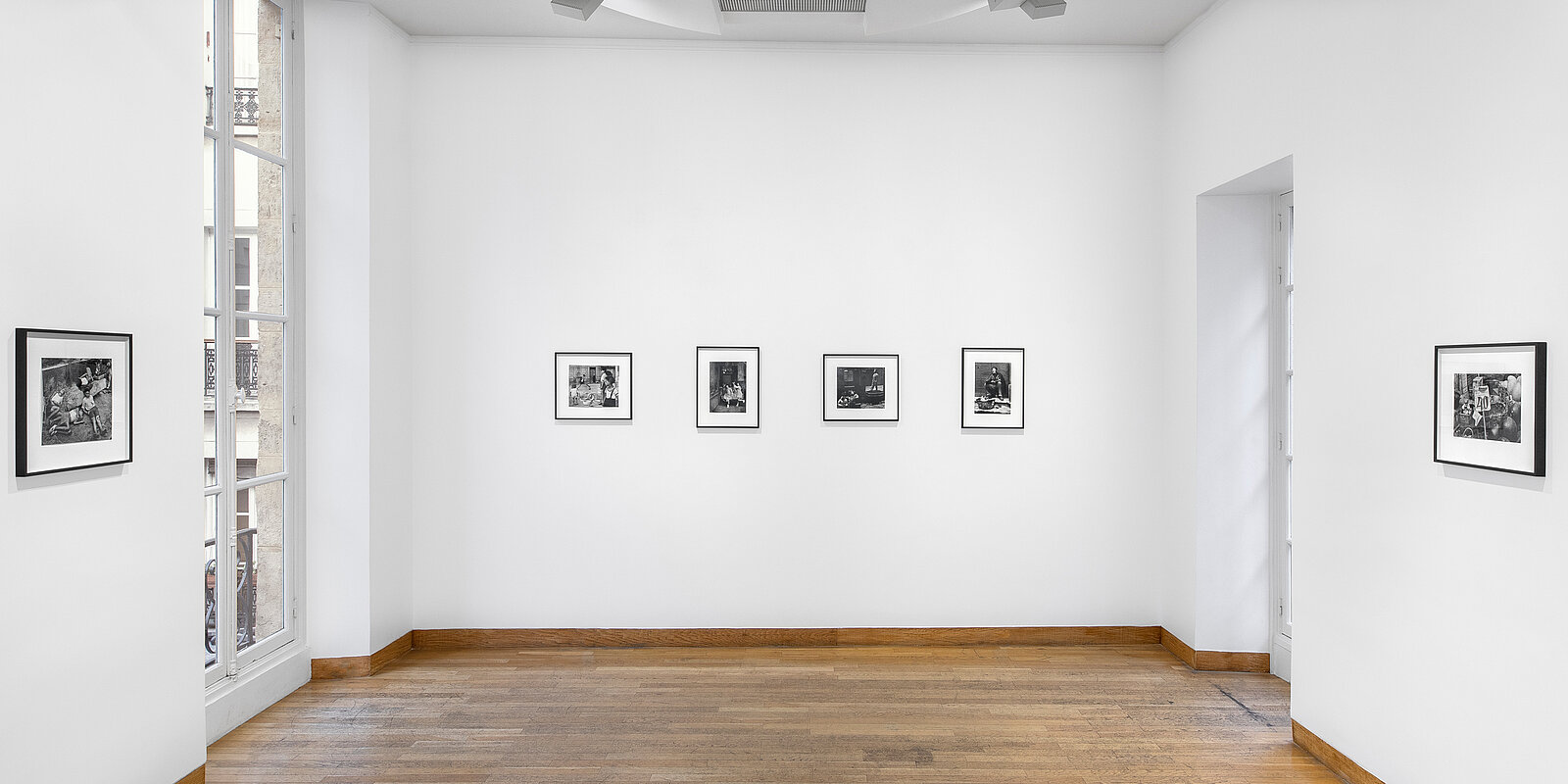
Galerie Karsten Greve Paris
Our Paris gallery is open for visitors:
Tuesday - Saturday 10 am - 6 pm
The work of Herbert List (1903 in Hamburg – 1975 in Munich), whose artistic approach was shaped by the European avant-garde, is in keeping with the pure tradition of the 1930s, combining the formal austerity of Bauhaus with the magic of surrealist inspiration. Often described as the “photographer of silence”, ruins, bodies and places were key inspirations dispersed throughout his work, through the destroyed Munich of 1945, on the trail of ancient Greece and along many escapades in which Herbert List immortalised snippets of life. It was through his travels, at the beginning of the 1930s, that he discovered Italy, with which he developed a special relationship.
Classical art and architecture, as well as Greek mythology, were subjects that enthralled List well before his discovery of photography in 1930. In 1936, he left National-Socialist Germany and travelled to London, Paris and Athens. He regularly crossed the Alps to enjoy the southern sun and satisfy his interest in art history by granting himself short visits to Venice, Florence and Rome. He was fascinated by the beauty of Mediterranean light and contrasts, which he never ceased to explore. The Greek isles, Italy, southern France, Spain and Morocco were all legs of the journey that shaped his art. Shadow, more than light, had a capital importance in his pursuits. Herbert List transformed objects and people by creating his own enigmas, in Shadow of David, Italy, Florence, 1934, for instance, or Rolf Düring in front of Roman bust, Italy, 1949. Geometrised bodies, shadows and reflections thus became the subjects of experiments with shape and the use of double exposure created new spaces, each one a kind of timeless magical dream, so important to surrealists.
Gradually, Herbert List embraced a more spontaneous sort of photography, the starting point of which was the 1953 View from the Window series. After hurting his foot, he locked himself in the apartment of his friend, a fellow photographer and the executor of his Estate, Max Scheler, at no. 65 Via della Lungarina in Rome, in the Trastevere neighbourhood. He borrowed a Leica 35 mm camera and settled down by the window to capture scenes of life, influenced by Henri Cartier-Bresson, who he had met at Magnum Photos, and the neorealism of Italian cinema. Incidentally, he worked alongside director Vittorio De Sica on the film Stazione Termini that very year and met writer and film director Pier Paolo Pasolini, whose writings strongly resonated with his photographs. These photographs of 1950s Rome capture moments that List described as “decisive”. Still lifes gave way to children’s games and surrealist landscapes vanished in favour of the city’s trompe l’oeils.
In the following years, Herbert List threw himself into countless photo reports and took an interest in documentary photography. In 1950 and 1951, he had gone to Milan for a project on Casa Verdi, then to Palermo to produce a series on the Capuchin Monastery Catacombs. He then went on to take photographs of the Mannerist Gardens of Bomarzo at Palazzo Orsini and tuna-fishing scenes on the small island of Favignana in Sicily. He achieved the height of that documentary work at the end of the 1950s, as he strolled through the streets of Naples where Vittorio De Sica was directing another film, The Last Judgment. He photographed every person who caught his attention and they were then interviewed by De Sica. The result was Napoli, a reference book published in 1962. Its images convey the city’s vibrant, confusing atmosphere. The book offers an almost cinematographic corpus of pictures that dissolve the boundary between artistic photography and documentary photography.
An eclectic mixture of places, people and staging, Herbert List’s Italian impressions are thus simultaneously a mosaic of past and present, art and life.

